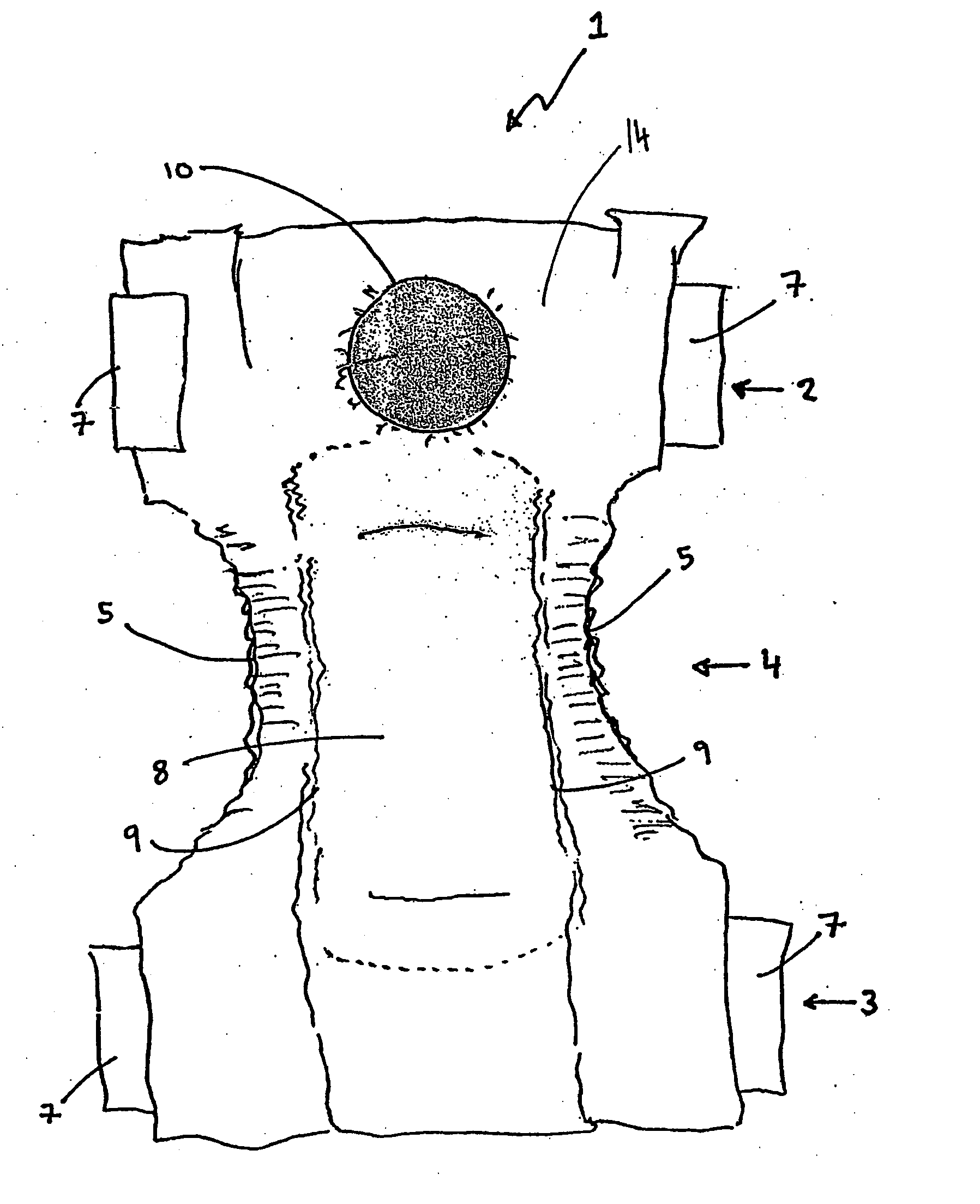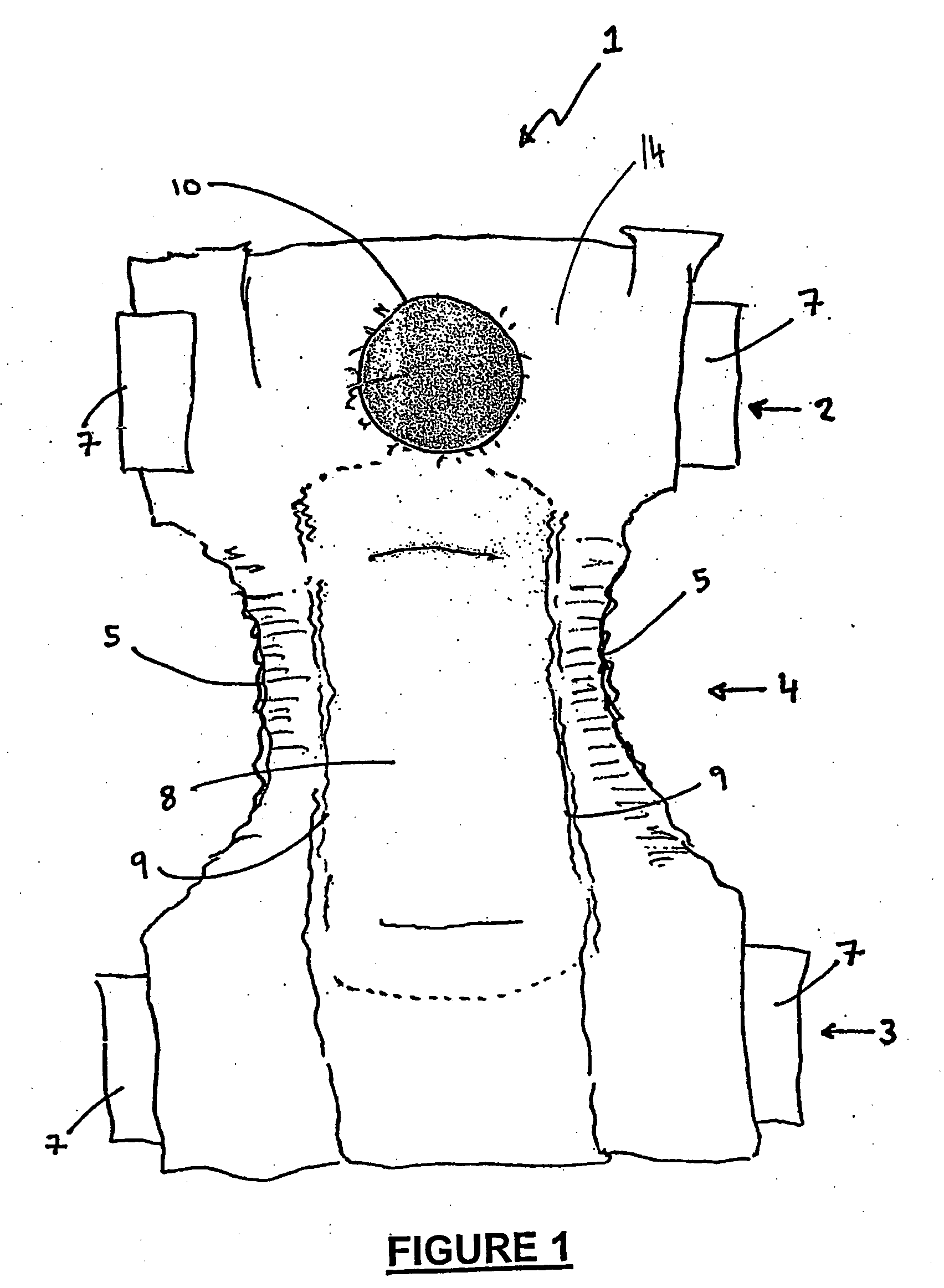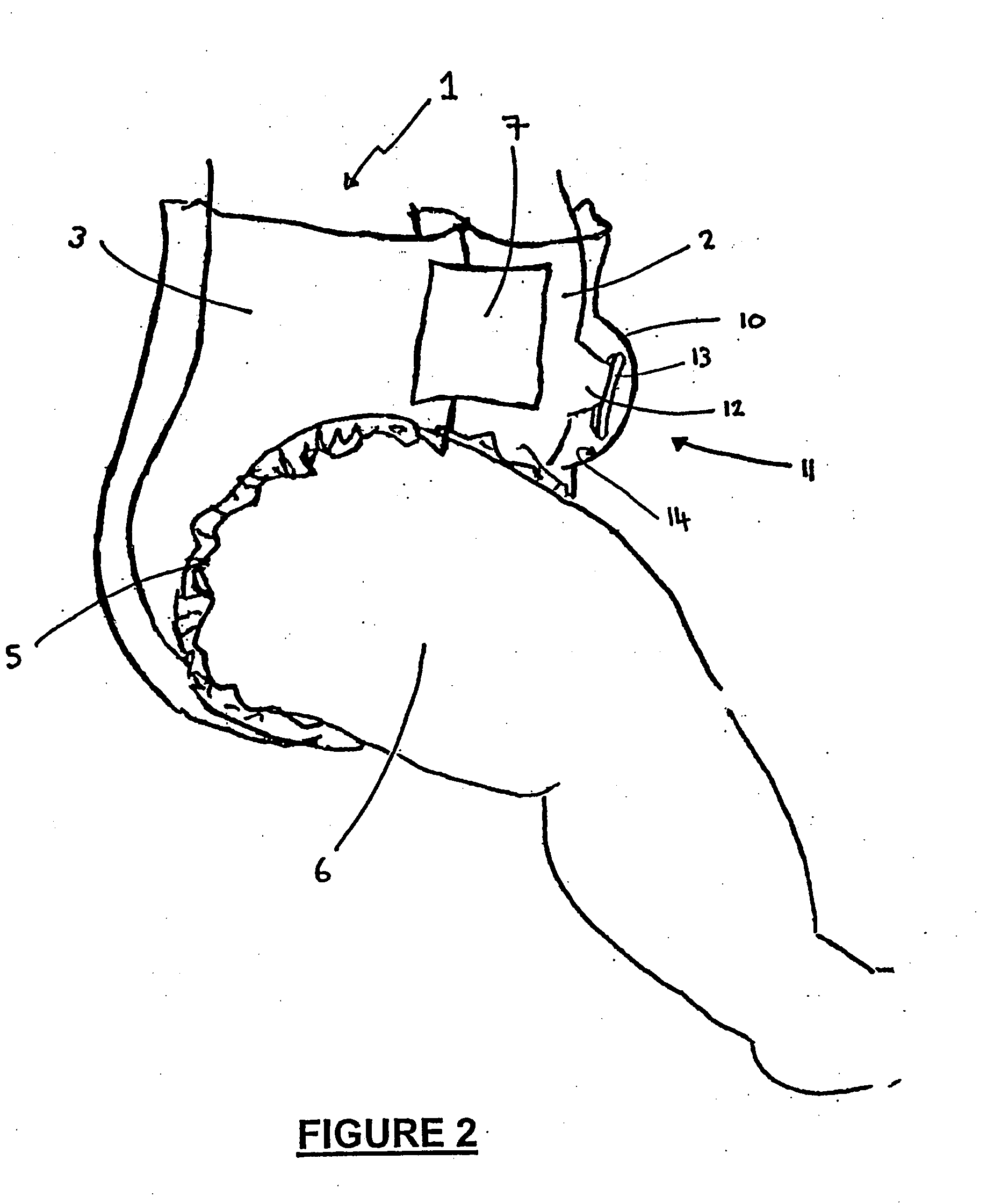Newborn nappy
a technology for newborn infants and nappy pads, which is applied in the field of newborn nappy pads, can solve the problems of reducing the performance of the nappy, the degree of overlap between the sizing capacity of the nappies for newborn infants and the capacity of the nappies intended for smaller infants, and the reduction of the nappy performance. , to achieve the effect of reducing the biological infection of the umbilical cord
- Summary
- Abstract
- Description
- Claims
- Application Information
AI Technical Summary
Benefits of technology
Problems solved by technology
Method used
Image
Examples
Embodiment Construction
[0046] FIGS. 1 and 2, illustrate a preferred embodiment of the present invention in the form of an infant nappy (1) configured to provide umbilicus relief from mechanical irritation and contact with urine or faeces collected by the nappy (1) and to thereby prevent umbilical infection on a newborn baby prior to the healing of the umbilical area on the infant.
[0047] The nappy (1) is substantially comprised of a front portion (2), a rear portion (3) and a central crotch portion (4) interposed therebetween. The nappy (1) is substantially rectangular in plan view with arcuate portions (5) adjacent the central crotch portions (4) shaped to circumscribe the legs of an infant (6) as shown in FIG. 2. The front and rear portions (2, 3) are releasably attachable to each other via adhesive tabs (7) projecting from the lateral edges of the front and rear portions (2, 3).
[0048] The inner surface (14) of the nappy (1) facing the infant's (6) skin in use is shown in FIG. 1. The inner surface of the...
PUM
 Login to View More
Login to View More Abstract
Description
Claims
Application Information
 Login to View More
Login to View More - R&D
- Intellectual Property
- Life Sciences
- Materials
- Tech Scout
- Unparalleled Data Quality
- Higher Quality Content
- 60% Fewer Hallucinations
Browse by: Latest US Patents, China's latest patents, Technical Efficacy Thesaurus, Application Domain, Technology Topic, Popular Technical Reports.
© 2025 PatSnap. All rights reserved.Legal|Privacy policy|Modern Slavery Act Transparency Statement|Sitemap|About US| Contact US: help@patsnap.com



